| Class: | angiosperms |
| Order: | Ericales |
| Family: | Primulaceae |
| Genus: | Glaux |
| Scientific name: | Glaux maritima L. |
| Name acc. to: | Gubanov 1996 |
| Herbar: | list records    |
| Link to Flora of China: | http://www.efloras.org/browse.aspx?flora_id=2&name_str=Glaux+maritima |
| open map in a new window | 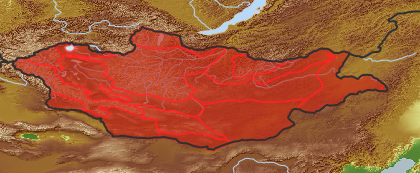 |
| Habitat: | Alkaline meadow plots and pebbles, river and brook banks, lake coasts, springside, chee-grass stands, damp margins of solonchaks (Grubov 2001). |
| Habit (i)general appearance of a plant | |
| Growth form: (i)Herb, shrub, tree or climber. | herb (i)Herbaceous, erect plant, up to 2m high, mostly with a leafy shoot; if perennial, shoots die to the ground each season, shoots are not woody
example: Artemisia pectinata   inherited by family Primulaceae: herb inherited by family Primulaceae: herb
|
| Size of plant: (i)Attention: use flowering or fruiting specimens to assess plant height (many biennial plants possess only a basal rosette in the first year). | to 100 mm  inherited by genus Glaux: inherited by genus Glaux:
|
| Parasite status: (i)Is the plant a half- or full parasite? | no parasite/saprophyte (i)Plant fully autonomous, leaves with chlorophyll
example: Most plants, Ranunculus  inherited by family Primulaceae: no parasite/saprophyte inherited by family Primulaceae: no parasite/saprophyte
|
| Water or terrestrial plant: (i)Where do the plants grow? | terrestrial (i)Plant grows on dry land
example: Orostachys spinosa  inherited by family Primulaceae: terrestrial inherited by family Primulaceae: terrestrial
|
| Leaf (i)expanded, usually photosynthetic organ of a plant (including phylloclades) | |
| Leaf development: (i)Structure and development of leaves. | with green leaves (i)Plant with green leaves  inherited by family Primulaceae: with green leaves inherited by family Primulaceae: with green leaves
|
| Leaf arrangement: (i)Arrangement of leaves at the stem. | opposite, opposite-decussate (i)Two leaves per node
example: Lamiaceae, e.g. Phlomis    inherited by genus Glaux: opposite, opposite-decussate inherited by genus Glaux: opposite, opposite-decussate
|
| Simple or divided leaves: (i)Are the leaves simple or completely divided in several parts? Blade of the leaf entire or (more or less) deeply dissected. Attention: There are various appearances of the leaf margin (from entire to toothed and lobed). Here, we ignore this and ask only for dissections that separate the leaf for more than one third of its length or width, whatever is smaller. Sometimes, it is difficult to tell apart compound leaves from a shoot system with simple leaves: look for stipulae and/or axillary buds at the ground of the leaves: if only some possess these structures, the others are most likely leaflets of a compound leaf. | simple (i)Non-divided leaf, but margin may be incised nearly to the ground   inherited by genus Glaux: simple inherited by genus Glaux: simple
|
| Shape of blade: (i)Easy for simple leaves. In compound leaves use the general shape of leaflet. Always check the ground for largest leaves of a plant. To be worked out: how to handle pinnate leaves? | elliptic (including ovate and obovate) (i)Elliptic: broadest at the middle and narrower at the two equal ends; ovate: egg-shaped, attached at the broad end; obovate: attached at the narrower end
example: Limosella aquatica   inherited by genus Glaux: elliptic (including ovate and obovate) inherited by genus Glaux: elliptic (including ovate and obovate)
lanceolate (i)Lance-shaped; much longer than wide, with the widest point in the middle or below   inherited by genus Glaux: lanceolate inherited by genus Glaux: lanceolate
|
| Length of leaves: (i)How long is the leaf, be carefull in compound leaves, measure the complete leaf. | from 6 mm to 10 mm  inherited by genus Glaux: inherited by genus Glaux:
|
| Leaf apex: (i)Appearance of the tip of leaf resp. leaflets in compound leaves. | obtuse (i)Sides coming together at the apex at an angle greater than 90 degrees
example: Fallopia convolvulus   inherited by genus Glaux: obtuse inherited by genus Glaux: obtuse
|
| Leaf margin: (i)Structure of leaf margin (or that of a leaflet in case of compound leaves). Attention: Here we ask for the leaf margin, defined as all those dissections that separate the leaf for less than one third of its length or width, whatever is smaller. To be worked out: how to handle margin of pinnate leaves? | entire (i)Plain margin, not toothed
example: Iris   inherited by genus Glaux: entire inherited by genus Glaux: entire
|
| Petiole: (i)Leaf divided into stalk (petiole) and blade. | without (i)Leaves without petiole (stalk), sessile
example: Poaceae, Iris   inherited by genus Glaux: without inherited by genus Glaux: without
|
| Stipule: (i)Leaflets at the base of the petiole, these are smaller and of different shape. | none (i)Without stipules
example: Euphorbia, Ericaceae s.l.  inherited by family Primulaceae: none inherited by family Primulaceae: none
|
| Leaf colour upper side: (i)Shades of green on the leaf, upper side. | green (i)Clear green
example: Tribulus terrestris  inherited by genus Glaux: green inherited by genus Glaux: green
|
| Leaf colour lower side: (i)Shades of green on the leaf, lower side. | green (i)Clear green, in most species
example: Angelica decurrens  inherited by genus Glaux: green inherited by genus Glaux: green
|
| Leaf veination: (i)Arrangement of the main veins of a leaf. | pinnate (i)One main vein, several side veins, sometimes inconspicuous
example: Cicerbita     inherited by family Primulaceae: pinnate inherited by family Primulaceae: pinnate
|
| Flower (i)reproductive portion of the plant, consisting of sepals, petals, stamens, and pistils | |
| Flower appearance and pollination: (i)General appearance of the flower. | not attractive, wind-pollinated or some water plants (i)Small, colourless or green flowers
example: Betula, grasslike plants: Carex, Setaria, Juncus  inherited by genus Glaux: not attractive, wind-pollinated or some water plants inherited by genus Glaux: not attractive, wind-pollinated or some water plants
attractive, animal-pollinated (i)attractive and coloured flowers, mostly large, attracting surely animals
example: Trollius, Rosa, Chamaerhodos  inherited by family Primulaceae: attractive, animal-pollinated inherited by family Primulaceae: attractive, animal-pollinated
|
| Flower colour: (i)Attention: assess colour of the most colourful parts of the flower, but not of the stamens; be aware of single plants with a mutation (mostly white) on flower colour. | white (i)Most plants of the population white
example: Pleurospermum, Maianthemum  inherited by genus Glaux: white inherited by genus Glaux: white
pink (i)Between red and white
example: Centaurium  inherited by genus Glaux: pink inherited by genus Glaux: pink
|
| Perianth arrangement: (i)Attention: in some plants, flowers may be dimorphic in different ways (dioecious or gynodioecious). If flowers vary, record the characters of the most showy flowers. | simple, similar (i)Only one type of perianth leaves (tepals)
example: Tulipa   inherited by genus Glaux: simple, similar inherited by genus Glaux: simple, similar
|
| Diameter of flower: (i)Diameter of flower or flower head. | to 5 mm (i)
example: Aruncus  inherited by genus Glaux: inherited by genus Glaux:
|
| Flower symmetry: (i)Symmetry of the perianth leaves. Attention: to assess this character, look on sepals, petals and stamens, but neglect carpels and ovary. | radiary, regular (actinomorphic) (i)More than two axis of symmetry
example: Saxifraga: 5; Iris: 3   inherited by family Primulaceae: radiary, regular (actinomorphic) inherited by family Primulaceae: radiary, regular (actinomorphic)
|
| Flower form: (i)common forms of flowers ? Veronica | tubular to funnel-shaped (i)Petals form a tube, are often partially united to a cylindrical corolla, often surrounded by a calyx   inherited by genus Glaux: tubular to funnel-shaped inherited by genus Glaux: tubular to funnel-shaped
campanulate (i)Petals united to a bell-shaped corolla   inherited by genus Glaux: campanulate inherited by genus Glaux: campanulate
|
| Petal / Tepal number: (i)Number of petal leaves (inner perianth leaves, usually coloured). | 5 (i)
example: Potentilla  inherited by genus Glaux: 5 inherited by genus Glaux: 5
|
| Petal / Tepal fusion: (i)To which degree are the petal leaves connected? Petals sympetalous. | fused (i)petal leaves united, only tips are free (gamopetalous, sympetalous)
example: Linnaea, Adenophora, Stellera  inherited by family Primulaceae: fused inherited by family Primulaceae: fused
|
| Spur: (i)A hollow, slender, sac-like appendage of the perianth leaves, storing nectar. | no spur (i)Flower without appendage
example: Peganum  inherited by family Primulaceae: no spur inherited by family Primulaceae: no spur
|
| Stamen number: (i)Attention: We ask for the reproductive organs of the flower dispersing pollen. Count only fully fertile stamens, not staminodia (e.g. Parnassia). | 5 (i)
example: Peucedanum  inherited by genus Glaux: 5 inherited by genus Glaux: 5
|
| Stamen fusion: (i)To which degree are the stamens fused? Attention: Whereas the pollen sacs itself are often free., their stalks (filaments) may be fused. Here, we count them as fused if they are together over at least one thirth of their length. | free (i)Stamens with separate bases
example: Malus  inherited by family Primulaceae: free inherited by family Primulaceae: free
|
| Pistil number: (i)Number of pistils (female floral organs: style, if developed; stigma and carpels/ovary together build the pistil). | 1 (i)One carpel, but clearly one stigma
example: Pyrola, Primula, Alyssum  inherited by family Primulaceae: 1 inherited by family Primulaceae: 1
|
| Carpel number: (i)Number of carpels (carpel: forming a simple pistil or part of a compound pistil, modified leaf). | 5  inherited by family Primulaceae: 5 inherited by family Primulaceae: 5
|
| Carpel fusion: (i)To which degree are the carpels (modified leaf forming simple pistil or part of a compound pistil) fused. | fused (i)Carpels united into an ovary, only styles are free
example: Malus, Berberis  inherited by family Primulaceae: fused inherited by family Primulaceae: fused
|
| Style number: (i)Portion of the pistil connecting the stigma to the ovary. | 1  inherited by family Primulaceae: 1 inherited by family Primulaceae: 1
|
| Ovary position: (i)For entirely or partly fused carpels, describe their position in relation to the insertion point of perianth leaves (best done by doing a longitudinal section of a flower). | superior (hypogynous) (i)Base of carpels attached above insertion point of perianth leaves, carpels free or fused
example: Delphinium, Anemone    inherited by family Primulaceae: superior (hypogynous) inherited by family Primulaceae: superior (hypogynous)
|
| Sex: (i)Distribution of male and female organs among flowers, only most commonly cases. | bisexual, hermaphrodite (i)All or nearly all flowers of a plant with male and female parts
example: Haplophyllum, Chenopodium  inherited by family Primulaceae: bisexual, hermaphrodite inherited by family Primulaceae: bisexual, hermaphrodite
|
| Fruit (i)the seed bearing organ, with or without adnate parts; a ripened ovary and any other structures which are attached and ripen with it. Aggregate fruits are handled like simple fruits for determination. | |
| Consistency: (i)Fleshy fruits or dry fruits, see dispersal adaptations for further classification. | dry (i)With a dry outer shell, no fleshy parts, but seed (embryo) could be edible  inherited by family Primulaceae: dry inherited by family Primulaceae: dry
|
| Type of fruit: (i)Common fruit types (including pseudocarp). | Solitary fruits (i)     inherited by family Primulaceae: Solitary fruits inherited by family Primulaceae: Solitary fruits
capsule (i)Dry dehiscent fruit, releasing seeds by slits or holes.
example: Poppy, most Caryophyllaceae, Cerastium, a lot of Scrophulariaceae, Iris (oppened capsule looks like Delphinium), Zygophyllum - it is a very common fruit type     inherited by family Primulaceae: capsule inherited by family Primulaceae: capsule
Dehiscent fruits (i)Fruits open along a longitudinale line (except silicula)  inherited by family Primulaceae: Dehiscent fruits inherited by family Primulaceae: Dehiscent fruits
|
| Opening of fruit: (i)Mode of dehiscence at maturity to release seeds. | opening / dehiscent (i)Dry? Fruits opening with different types  inherited by family Primulaceae: opening / dehiscent inherited by family Primulaceae: opening / dehiscent
|
| Hairs | |
| Has hairs?: | no hairs, glabrous  inherited by genus Glaux: no hairs, glabrous inherited by genus Glaux: no hairs, glabrous
|
| Root / shoot below ground (i)plant part below ground (in most cases), including below ground shoots, without leaves | |
| Root type: (i)Organisation of the roots. | allorhizous (i)Plant with a conspicuous tap root, one larger tap root with side roots
example: Dicotyledonae  inherited by order Ericales: allorhizous inherited by order Ericales: allorhizous
|
| Distribution (i)region where the plant is likely to be found | |
| Distribution (Veg. Zones): (i)acc. to Grubov 1952 | Khubsgul (i)In distribution data often named as '1' 
Khentei (i)In distribution data often named as '2' 
Khangai (i)In distribution data often named as '3' 
Mongol-Daurian (i)In distribution data often named as '4' 
Great Khingan (i)In distribution data often named as '5' 
Khobdo (i)In distribution data often named as '6' 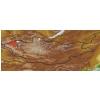
Mongolian Altai (i)In distribution data often named as '7' 
Middle Khalkha (i)In distribution data often named as '8' 
East Mongolia (i)In distribution data often named as '9' 
Depression of Great Lakes (i)In distribution data often named as '10' 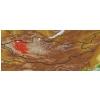
Valley of Lakes (i)In distribution data often named as '11' 
East Gobi (i)In distribution data often named as '12' 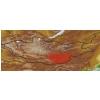
Gobi-Altai (i)In distribution data often named as '13' 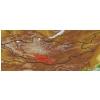
Dzungarian Gobi (i)In distribution data often named as '14' 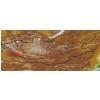
Transaltai Gobi (i)In distribution data often named as '15' 
Alashan Gobi (i)In distribution data often named as '16' 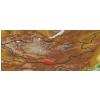
acc. to: Gubanov 1996 |
| Distribution Khangay: (i)acc. Flora Khangaya 1989 | IV
V
VI
|